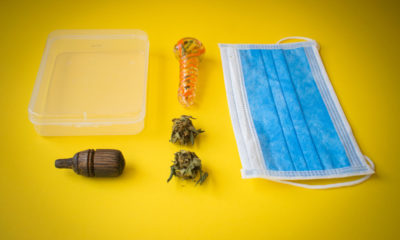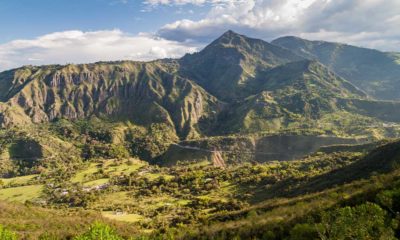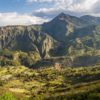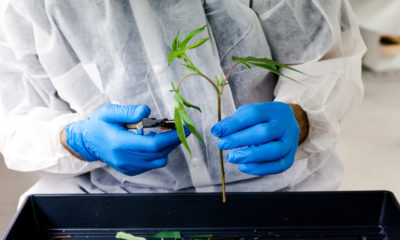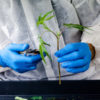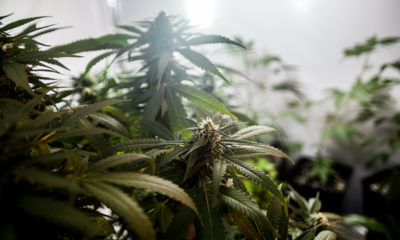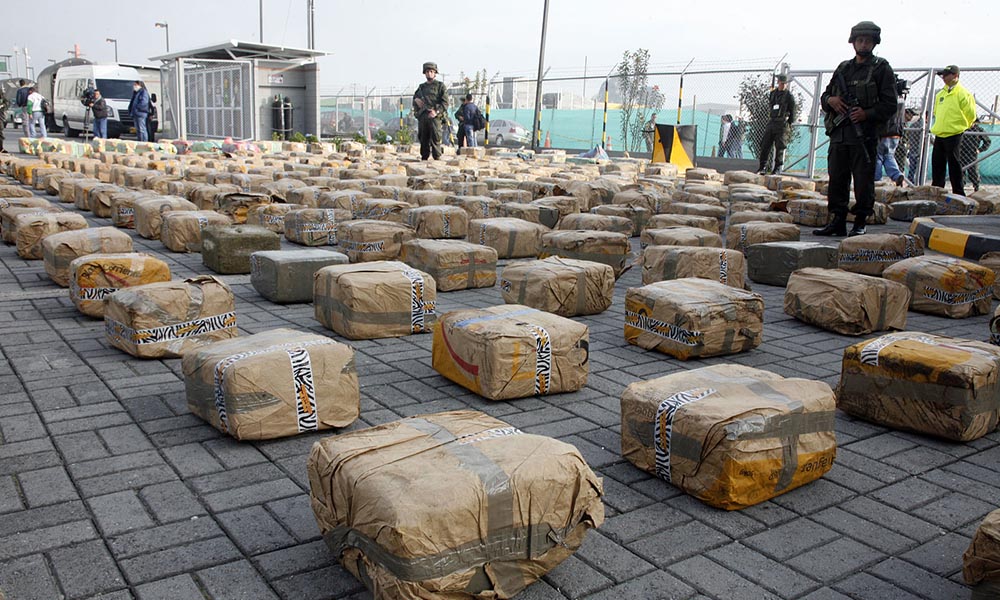
Economics
Colombia Strives to Lead Global Pot Market, Pushing Out Peasant Growers
With foreign capital pouring in to Colombia’s newly legalized cannabis sector, industry leaders foresee the country becoming the world leader in production and exports — a new “Saudi Arabia of cannabis.” However, traditional peasant producers fear they will not have access to the legal market, but will continue to face repression and eradication.
Over the past generation, the global “war on drugs” — overwhelmingly pursued with U.S. foreign aid money and under Pentagon direction — has militarized Colombia and escalated violence in the country. But now, amid a peace process with the guerillas, the country is increasingly looking to legal cannabis as a way out of its long crisis. Paradoxically, it could trade on its notorious reputation as marijuana producer to become a global leader in the burgeoning legal industry.
This was the clear portrayal in a glowing March 10 story in the Washington Post, where reporter Anthony Faiola wrote, “Colombia is looking to exchange gun-toting traffickers for corporate backers in a bid to become the Saudi Arabia of legal pot.”
The Washington Post account notes a telling irony that the new industry is “budding” (pun intended?) on the outskirts of Medellín, where Pablo Escobar set up his marijuana syndicate in the 1970s before moving on to other substances and becoming the “King of Cocaine.” Faiola writes: “Fifteen years after his death in a last stand with the law, cannabis plants are blooming in the emerald hills beyond the city, this time with the government’s blessing.”
Quoted is Camilo Ospina, chief innovation officer for the Canadian-owned PharmaCielo Colombia Holdings. “Our advantage is that the Colombian brand already has a mystique,” he said. “We want to intensify that, so that the Colombian cannabis you already know – the Punto Rojo, the Colombian Gold – is the cannabis you want to buy.”
Pursuant to the 2016 statute legalizing medical marijuana for both internal consumption and export, the government started issuing the first licenses for cultivation and processing in September, approving 33 companies so far. Legal cultivators such as PharmaCielo are now growing test crops.
Also quoted is Ariel Huetio, a community organizer who represents indigenous peasants in what Failoa calls the “western state of Cauca.” (Actually Cauca is a department — Colombia does not have “states,” or a federal system.) “This is our chance to be part of a legal system,” Huetio told the Washington Post. Local peasant growers have struck a deal to supply cannabis to FCM Global, a Medellín-based (but Canadian-backed) company with a processing facility just outside the city. “This is our chance to say no to the wrong people and yes to the right ones.”
Colombia’s domestic media is also hyping an imminent boom. Bogotá’s City Paper reports that by the end of 2017, the Ministries of Health, Justice and Agriculture authorized the harvest of 40.5 tons of cannabis for export, and that the government aims to provide 44 percent of the global demand of cannabis in 2018.
Another Canadian-owned licensed producer, Khiron Life Sciences, last month joined with the Colombian Association of Neurology to co-host an International Medicinal Cannabis Symposium in Bogotá, bringing together industry leaders and scientific experts from around the world. (It was actually the second such international cannabis conference held in Colombia in recent months — a ExpoMedeWeed was hosted by the Medellîn Botanical Gardens back in November.)
But it isn’t all good news. After 18 years and $10 billion spent on Plan Colombia, the massive and militarized U.S.-led counter-narcotics program, cocaine production in the Andean nation is said to be at an all-time high. And for many small peasants across the country’s narco-zones, all too little has changed.
A still modest niche in the legal cannabis sector has opened for indigenous peasants in Cauca, largely due to pressure from below. Growers who were long consigned to the illegal economy are starting to come in from the cold, and officials are hoping that some will even abandon coca leaf for medical marijuana production. Legal cannabis could prove to be the most effective “substitution crop” for Colombia. However, this model has not even started to take hold elsewhere in the country.
Colombia’s newly formed National Coordinator of Coca, Poppy and Marijuana Cultivators (COCCAM) warned in a statement March 20 that the government’s counter-narcotics effort — still centered on eradication of coca leaf — is on the brink of collapse, losing the good will of the peasants because of continued violence. The statement, reported in El Colombiano newspaper, said that in 2017, a total of 12 local peasant leaders around the country who had been participating in the government’s “voluntary eradication” program were killed, while another 12 were killed in clashes with security forces in protests over forced eradication.
This is part of a general wave of terror in the countryside. Estimates of the number of social leaders assassinated around the country in 2017 are as high as 200. Tellingly, peasant leaders both cooperating with or opposing the voluntary eradication effort are targeted for assassination, as either local community control over coca production or an end to coca production threatens the sinister nexus of regional cartels and their paramilitary enforcers.
The COCCAM statement said the government should take “immediate measures to guarantee the life, integrity and personal security” of the community leaders.
COCCAM leader Luz Córdoba told El Espectador newspaper that none of the aid to rural communities promised in return for eradication under the Havana peace accords with the (now disarmed) FARC guerillas has been delivered. “Nothing that is promised in Point 1 of the Havana accords, on Rural Integral Reform, has been complied with,” he said.
And then there’s the role that the United States plays in the discord. The U.S. Congress just passed a 2018 budget bill that maintains aid levels to Colombia at $390 million — now mostly going to peace plan implementation rather than military aid and narcotics enforcement, under Obama’s “Peace Colombia” program. President Trump signed the budget bill to prevent another government shut-down despite his objections to the Colombia aid package (among other things). But last September, the Trump White House issued a memo stating that the administration had “seriously considered” listing Colombia as one of the countries (along with Bolivia and Venezuela), that had “failed demonstrably” to take significant steps to rein in narcotics production, which would mandate an aid cut-off.
With remnant hardline guerilla factions remaining in arms despite the peace accord, there is plenty of potential for Colombia to hurdle back toward the violence of the past. Meanwhile, the big medical marijuana operations around Medellín are dominated by corporate outfits with foreign financing. COCCAM is telling us that if legal cannabis is going to provide a way out of the drug war quagmire, the program is going to have to be instated with a sense of equity.
TELL US, would you buy Colombian cannabis?







